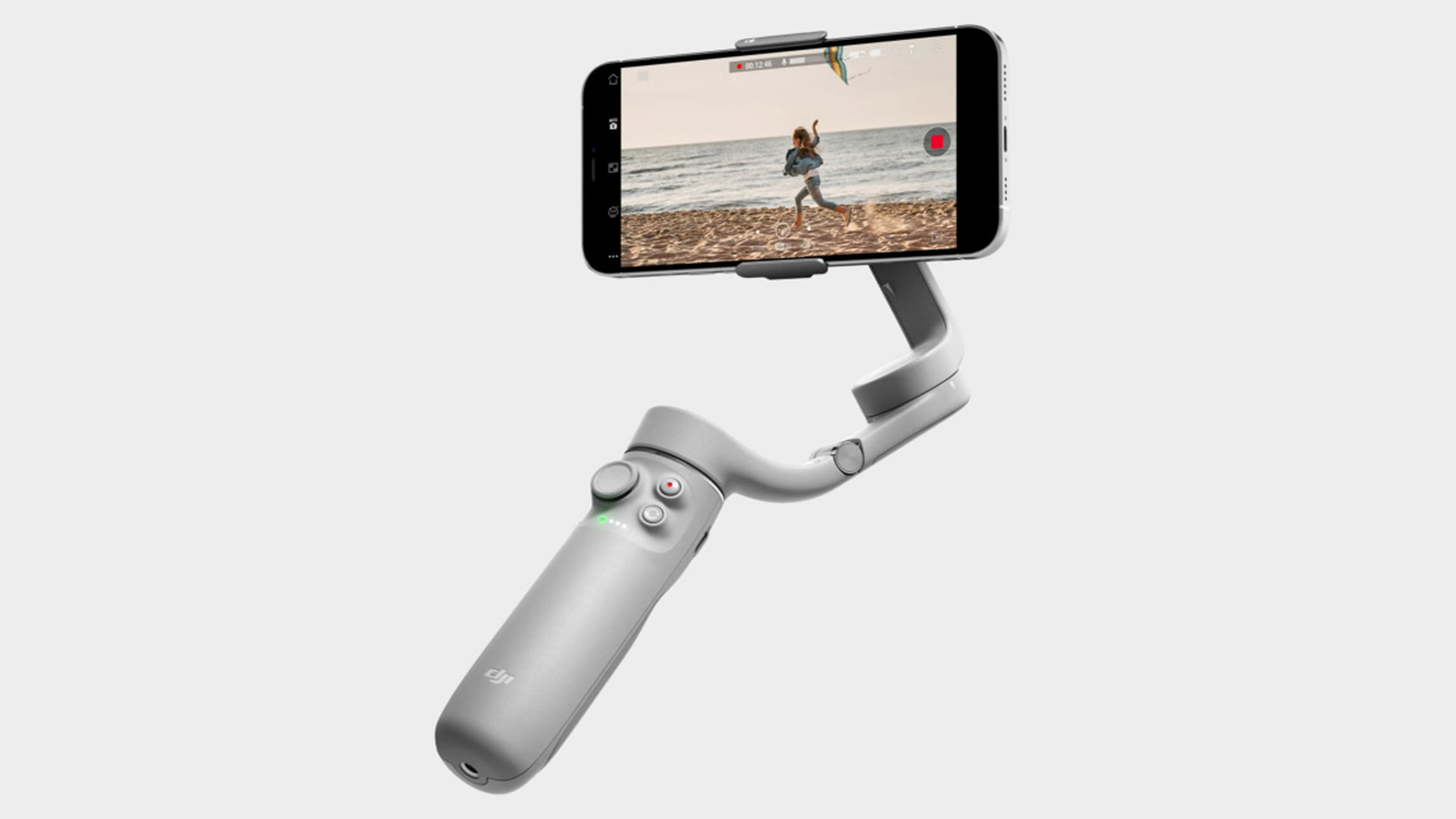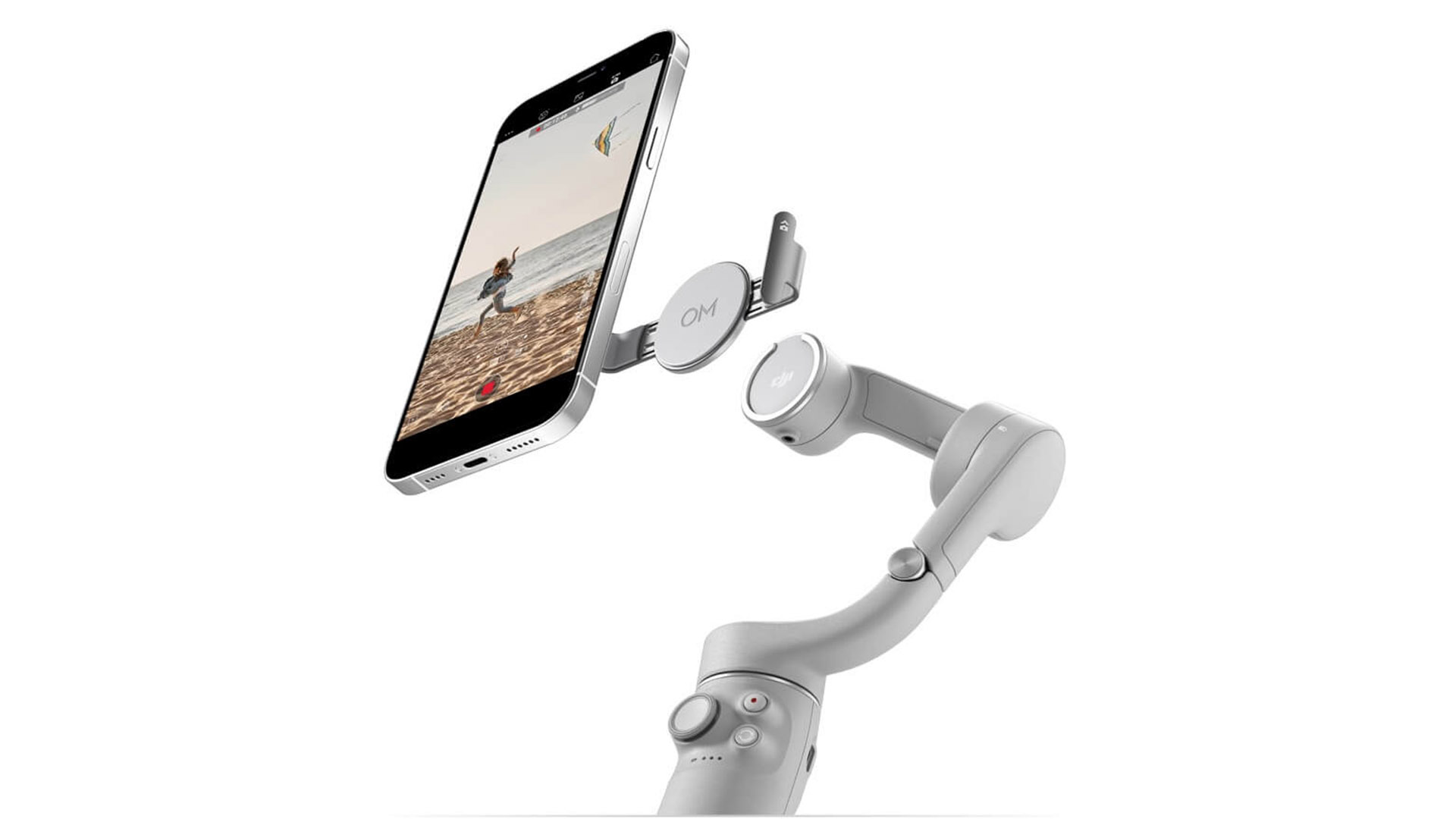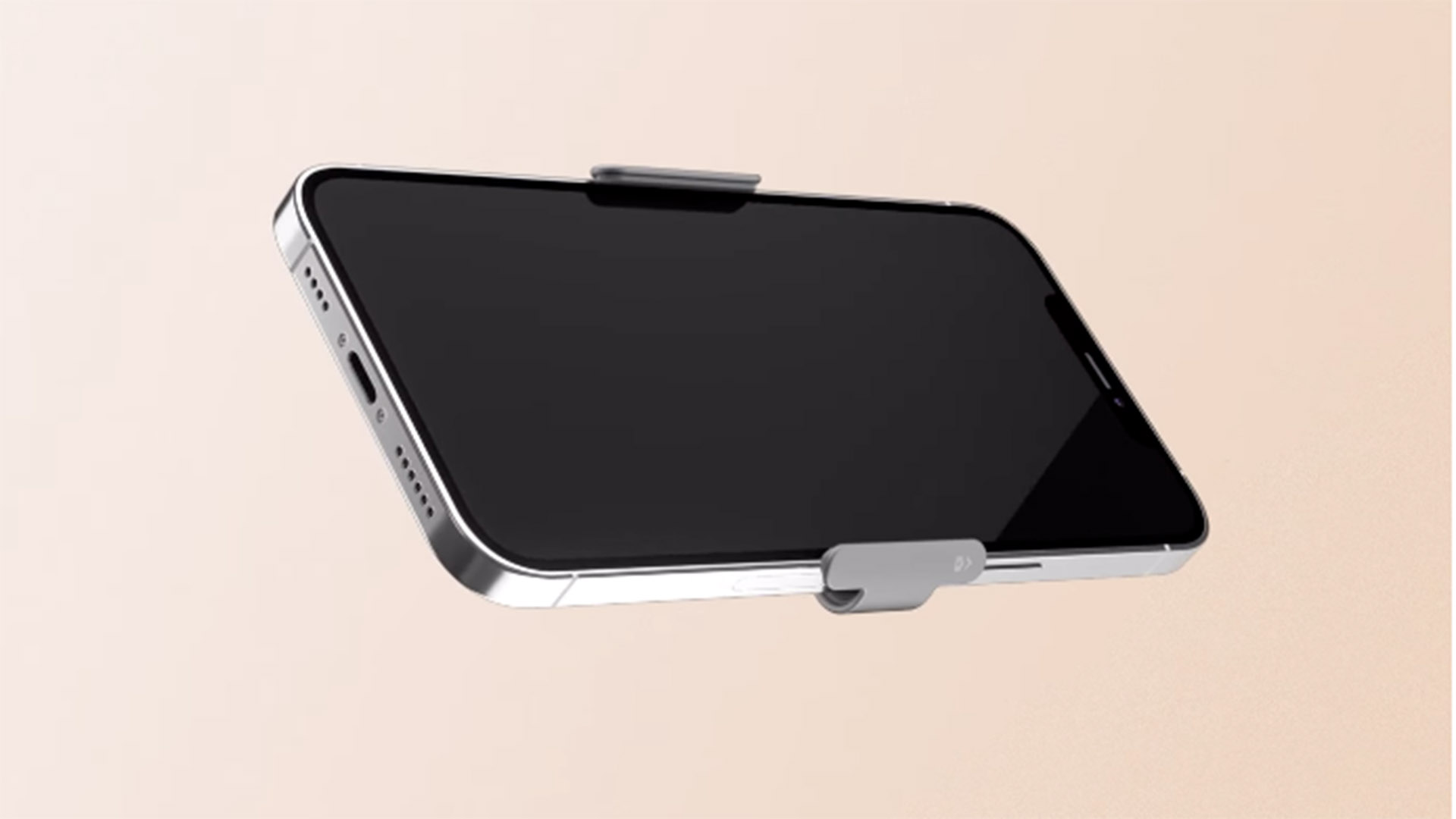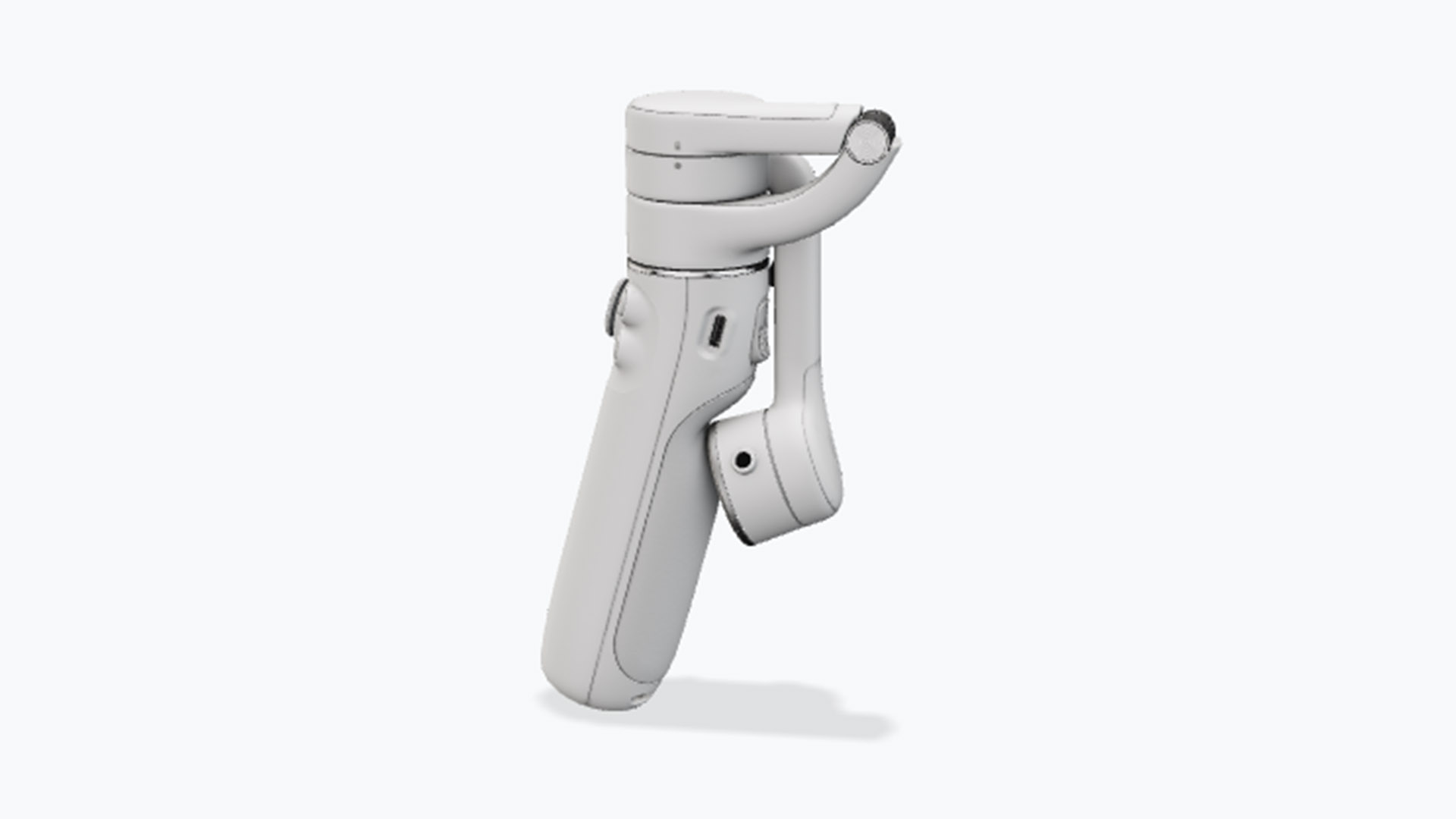DJI Osmo OM5 Gimbal review: smarter selfies
A well-priced gimbal that stabilizes your smartphone video and doubles as a selfie stick

The DJI Osmo OM5 is a low-priced phone gimbal that helps you shoot smoother, more attractive video. It is not without its quirks, though.
-
+
Excellent stabilization
-
+
Great for selfies and high shots
-
+
Low price
-
-
Extension rod exaggerates some movements
-
-
Controls take some getting used to
Why you can trust T3

The DJI Osmo OM5 is the latest version of DJI’s phone gimbal system. If you want to shoot video on your phone, you need a gimbal. This motor-controlled holder keeps your phone steady as you bounce around. The OM5 creates smooth, gently panning video that looks much, much better than handheld.
The OM5 launched in September 2021, and kicked off something of a run of releases that also included the DJI Mavic 3. It's one of a small selection of non sky-bound gadgets from the brand behind most of today's best drones, alongside the likes of the DJI Pocket 2 vlogging camera, the DJI Action 2 action camera and DJI Mic wireless microphone system.
There isn’t a lot here to persuade owners of previous DJI OM models to upgrade, though, unless they have an urgent need for the selfie-stick style extension that puts the phone at a longer distance from you. But for those who haven’t used a gimbal before, it is an eye-opening experience, making your videos much smoother, easier to watch, and just nicer, while also adding a range of new features and shooting modes.

DJI Osmo OM5 Gimbal Review: design and handling
The OM5 looks like a prop gun from a 1970s Sci-Fi movie, with a rounded plastic handle with several thumb controls and a fold-out phone holder. At the end of the phone holder is a magnetic plate that the phone attaches to. To use this, you attach a spring-loaded clamp to your phone which has a matching magnetic plate attached. Bring this near the one on the end of the OM5 gimbal arm and the two snap together, holding the phone in place.
It sounds a bit like a mad scientist creation, but it works, and it is strong enough to hold heavy phones. I tested it with a Samsung Note 20 and a Samsung Fold 3, and both were held firmly and tightly in place during our tests (although, to be fair, DJI does produce a list of approved devices for the OM5, which does not include the Fold 3). That’s good, but personally, I would like to have a backup strap or cable in place just in case the magnets aren’t strong enough to prevent my $1800 phone from falling off when I am waving it around, especially when using the extension rod.
Previous versions of the Osmo gimbal also included a magnetic plate that would stick to the phone or a phone case, but this is now only available as an extra-cost add-on. DJI told me that this was because they found that people preferred the spring-loaded clamp, as it doesn't need to be permanently attached to the phone.
I did find, however, that these heavy phones strained the gimbal. Sometimes, the motors would produce an ominous buzzing sound while moving, and I did have occasional errors where the motors overheated and stopped working for a while.
The major addition to this new version is the aforementioned extension rod; a selfie-style telescoping stick between the handle and the cell phone holder. This can extend up to about 8.4 inches in six sections. It can be used as a selfie stick by extending the rod, then switch to the front-facing camera. Because the extension rod has the entire gimbal assembly at the end, the stabilization still works, although it is not as effective as hand movements tend to get amplified by the length of the rod, and there is only so much that the gimbal can do to correct for them.
It has other uses than taking selfies, though. With the control over the pan and tilt of the phone even when extended, you can shoot high shots without having to stand on a ladder. It certainly makes the phone a more useful camera.
You can’t really use the extension rod for low shots. When I tried, the gimbal wasn’t able to move the phone to properly orient it to shoot low-angle video due to the limitations of how far the gimbal can move the phone.
The gimbal is controlled through a combination of the physical controls on the handle and the DJI Mimo app.

DJI Osmo OM5 phone mount
DJI Osmo OM5 Gimbal Review: features
The OM5 requires some practice to use effectively. Getting your phone mounted on the gimbal with the clamp is fairly simple but works best without a phone case. Once the phone is in place, you turn the gimbal on by pressing and holding the mode button. The gimbal then runs through a short calibration routine, where it moves the phone to figure out where it is. The joystick control is used to pan and tilt the phone while the gimbal corrects for handshakes and small movements.
Next to the joystick are two smaller buttons: the switch and the record buttons. The function of the record button is fairly obvious, starting a video or taking a photo depending on the capture mode. The switch button has a couple of functions: press it once and it switches between front and back cameras. Press it twice and it rotates the phone from portrait to landscape mode. In addition, a slide control on the side of the handle controls the zoom of the camera.
Above the zoom slider is the Mode button. press it once to check the battery, twice to put the device into standby mode, and four times to change modes. If you press and hold while the gimbal is turned on, it turns off.
There is also a trigger control on the front of the handle which activates the ActionTrack feature. This will detect a moving object in the frame (a face or an animal) and track it, panning and tilting the camera to keep it in the frame. Press the trigger twice and you activate the gimbal lock, which keeps the camera facing in the same direction however you move.
Other functions are controlled through the DJI Mimo app. You can set the gimbal to track and follow an object on the screen, lock the tilt so that the camera can only pan and not tilt up and down or FPV mode, where it will keep it steady and pointing ahead as you walk. You can also control the speed of the reactions of the gimbal and enable special shooting modes.
These special modes include Hyperlapse, where the camera takes a photo every few seconds and combines them into a video, producing a feeling of speeding along a path. Dynamic Zoom creates what film people call a dolly zoom, where you combine zooming in with moving the camera away to create a dramatic look There is also a useful panorama mode, which automatically rotates the camera, takes three photos, and combines them into a single shot.
In addition, Story mode guides you through taking a series of short videos, then edits them together around a specific theme, complete with music and motion graphics. These fall into the cute rather than the useful category, though.

DJI Osmo OM5 folded
DJI Osmo OM5 Gimbal Review: performance
I was generally impressed with the performance of the OSMO OM5, which did an excellent job of making the video look smoother and more attractive. The Active Track feature also worked well: press the trigger once and the app identifies a moving object in the frame (such as a face or a dog) and pans the phone around to keep the object in the frame. It isn’t perfect, though, and if the person (or dog) moves too fast, it can lose track and you have to find it again by panning the camera and pressing the trigger once more.
The photo features are also useful, and occasionally amusing, options. The Panorama photo mode takes a series of photos (either three horizontally in a row or a grid of nine) then stitches them together. The Clone Me mode is also fun: it takes three shots with a time gap between so you can move from spot to spot and then stitches them together into a wide shot. So, you can be in the same photo three times. Both of these produced impressive and amusing results.
The extension rod is definitely a cool feature. It allows you to put the camera higher and lower than before, as well as the standard selfie shot. However, it does struggle, especially with larger phones like the Note 20 Ultra I used in testing. That’s a lot of mass to move around when compensating for movements, and the motors did occasionally produce a bee-like buzzing sound that was recorded by the phone. The motors did also overheat a couple of times, producing an error message and halting the gimbal until they cooled off.
The DJI Mimo app is also a little rough around the edges. I downloaded the latest version from the DJI site (version 1.6.4) which worked pretty well, but I did get the odd error message or notification in Chinese, especially when using the special shooting modes.
Some of these special modes are also compromised by some odd choices. The Dynamic Zoom, for instance, uses a digital zoom, where the program zooms in on the video by cropping it down rather than using the zoom lens on the phone. This reduces the quality of the video significantly and by the end, when it has zoomed in a fair way, it looks like it was shot with a cheap old camcorder. That’s frustrating when the phone we tested with has a very decent zoom lens that isn't used.
It is also lacking some pro features that I would like to see. You can’t, for instance, program a move into the device that it can repeat on request, which would make it great for special effects work. You can program a time-lapse that pans or tilts, though, moving over a period of between a few seconds and 24 hours.

DJI Osmo OM5 Gimbal Review: verdict
But it isn’t perfect. It takes some time to learn how to use, and while the extension rod is cool, it exaggerates some movements, which makes the video look worse. If you are an OM4 user, there really isn’t enough here to justify an upgrade, but if you are sick of shaky cell phone videos and want to make your travel movies look better, it is a great choice that won’t weigh you down.
The DJI Osmo OM5 is an excellent gimbal and improves the quality of the videos that you shoot with your phone. It is also pretty cheap. For $159/£139, you get the gimbal, carrying bag, mini tripod, and clamp to attach it to most phones. It folds down to a compact package that will fit into a small bag or camera case.
Sign up to the T3 newsletter for smarter living straight to your inbox
Get all the latest news, reviews, deals and buying guides on gorgeous tech, home and active products from the T3 experts
Richard Baguley has been writing about technology since the 1990s, when he left a promising career in high finance to work on Amiga Format magazine for Future. It has been downhill for him ever since, writing for publications such as PC World, Wired and Reviewed.com. He has tested gadgets as diverse as 3D printers to washing machines. For T3, he covers laptops, smartphones, and many other topics. He lives near Boston in the USA with his wife, one dog, and an indeterminate number of cats.
-
 Polar’s new subscription feature lands in the shadow of Garmin’s Connect+ rollout
Polar’s new subscription feature lands in the shadow of Garmin’s Connect+ rolloutPR genius or timing disaster? Polar’s new Fitness Programme adds adaptive training to its ecosystem
By Matt Kollat Published
-
 New Orient Star watches offer a glimpse of the magic within
New Orient Star watches offer a glimpse of the magic withinThere are two new skeleton pieces
By Sam Cross Published
-
 Netflix's most surprising 100%-rated sci-fi series returns with gorgeous trailer
Netflix's most surprising 100%-rated sci-fi series returns with gorgeous trailerLove Death + Robots is back for more
By Max Freeman-Mills Published